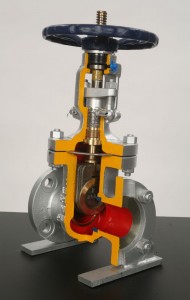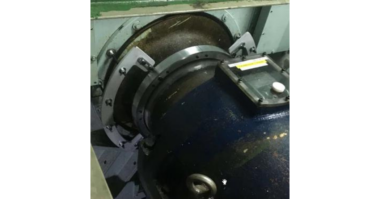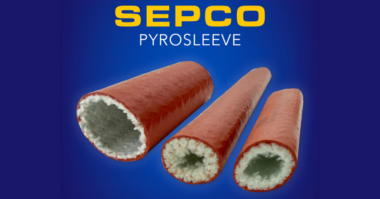The effects of seawater on the materials onboard vessels is no secret to the maritime industry. The very natural resource that keeps this industry alive and thriving requires every owner-operator and shipbuilder to be vigilant when selecting the products for
the vessel.
In this post, we will explore the various valve trim materials used for seawater applications. By understanding and selecting the appropriate interior valve components for your gate, globe, and check valves, you can extend the life of the valve and ultimately reduce costs. The decision on trim material should be based on the best material available in regards to the cost of material used for making the product itself. Trim materials can range from iron to exotic alloys. Some alloys, such as duplex stainless and hasteloy, though extremely resistant to seawater corrosion, are not an economic reality for most commercial applications.
While keeping in mind the economic value of material, understanding the effect of seawater on the material is also paramount. Seawater applications can be very demanding on the performance of the valve material. Corrosion and ultimately valve failure can be minimized by the use of proper alloy. Many of these types of material come standard with either a grade of stainless steel or bronze. The use of stainless steel either 13% Chromium (CR13) or 316SS is not recommended for seawater applications. While stainless steel is very resistant to most chemical corrosion, its Achilles heel is the chlorine molecules contained in the seawater itself. The chlorides in seawater make the stainless susceptible to failure from pitting and stress corrosion cracking. The most common commercially available valve material for seawater is bronze, (B-62 Alloy C83600). This material, while having better corrosion and biofouling resistance than stainless steel, is a softer metal and is more susceptible to physical damage to the seat and sealing surfaces of the valve.
To balance the corrosion resistance and physical material strength of trim materials, specialized seawater valves use Aluminum Bronze, ASTM B-148/150 alloy C62400, material for the construction of valve components. Alloys with an Aluminum content greater than 8% have duplex structures present which provide greater resistance to corrosion attacks and cavitation-erosion resistance than normal annealed structures. These materials are also suitable for application in potable and brackish environments as well as service in non-oxidizing mineral acids. Some of these non-oxidizing mineral acids include phosphoric, sulfuric; organic acids such as lactic, acetic or oxalic; neutral saline solutions such as sodium chloride or potassium chloride and alkalies such as sodium hydroxide, potassium hydroxide and ammonium hydroxide.
The addition of 10-11.5% Aluminum to the copper alloy almost triples the tensile and yield strength of the material. This decreases the possibility of physical damage and impingement to the sealing surfaces. The aluminum also increases the corrosion resistance of the alloy due to an aluminum and copper oxide film that forms on the surface offering additional protection from seawater corrosion. Aluminum Bronze can be used for both the body and trim of the valve in seawater applications. This material is very costly for use in the body components and can increase the valve price, by 2-4 times the cost of a steel body valve. By combining the use of economical steel bodies and nickel aluminum bronze alloys for the trim, a specialized seawater valve can be produced at a price that is competitive with steel valves that have a standard bronze trim. This combination can offer a longer life cycle for valves used in sea water applications.
As a distributor of valves, pipe and fittings, W&O understands the importance of asking the key questions for proper valve selection. As seawater is only one of the many mediums that flow through valves. For proper valve selection there has to be a clear understanding of the type of service medium, pressure and temperature of the medium, flow considerations and frequency. By clearly communicating this type of information and understanding the effects certain mediums, such as seawater, have on your valves you have the power to minimize the risk of valve failure and extending the life of the valves onboard the vessel.
About the Author:
 Steve Hartsaw has been with W&O for 22 years, and now serves as the Engineered Solutions Senior Project Manager. He utilizes his onboard and technical experience to assist customers, from design concept to ship repair, to provide the proper product, service and advice they need. Steve began his career as a deckhand on the Mississippi River progressing through the industry through different positions and opportunities. The vast knowledge he has gained over the 35 years he has spent in the industry, enables him to identify and provide solutions to the many challenges that are faced by customers every day. Steve can be contacted at steve.hartsaw@wosupply.com.
Steve Hartsaw has been with W&O for 22 years, and now serves as the Engineered Solutions Senior Project Manager. He utilizes his onboard and technical experience to assist customers, from design concept to ship repair, to provide the proper product, service and advice they need. Steve began his career as a deckhand on the Mississippi River progressing through the industry through different positions and opportunities. The vast knowledge he has gained over the 35 years he has spent in the industry, enables him to identify and provide solutions to the many challenges that are faced by customers every day. Steve can be contacted at steve.hartsaw@wosupply.com.





Comments